If you’re looking to manage your file library via the backend of your WordPress site, you can do so with Filr. Creating files in Filr can be done in the same way as you create new posts in WordPress, making it easy to get started.
To create a file using Filr, take the following steps:
- From your WordPress dashboard, go to Filr > Add New.
- Give your file a title – The title shows up within the library on the front end of your website. They follow the same rules as all titles in WordPress – the name has to be unique and you should avoid any special characters.
- The post ID will be used if you don’t provide a title for your file.
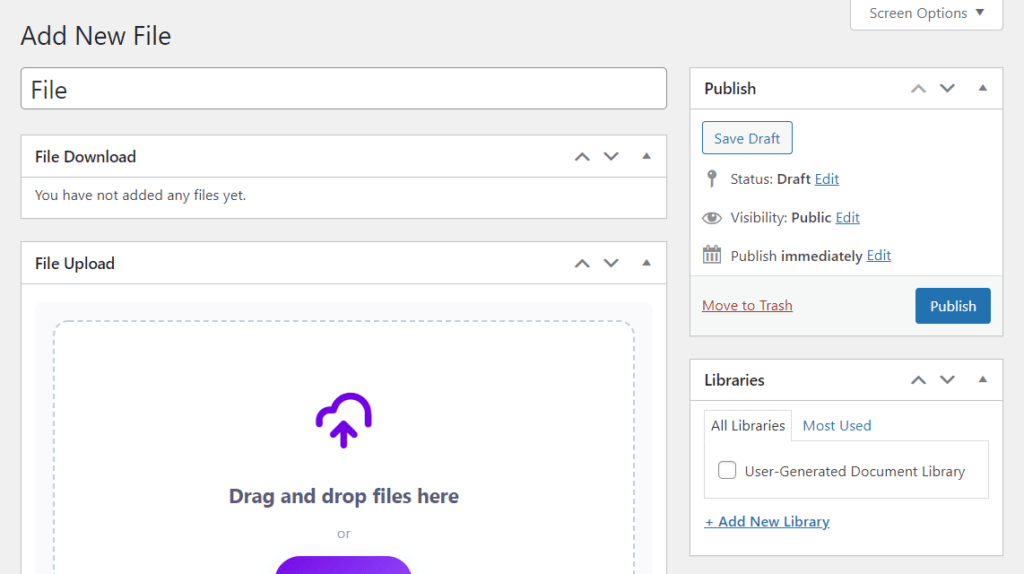
- Upload your file – Use the simple drag and drop uploader to upload one or multiple files. You see the upload progress and get immediate feedback if the upload was successful or not. Alternatively, click the Browse files button to add a file.
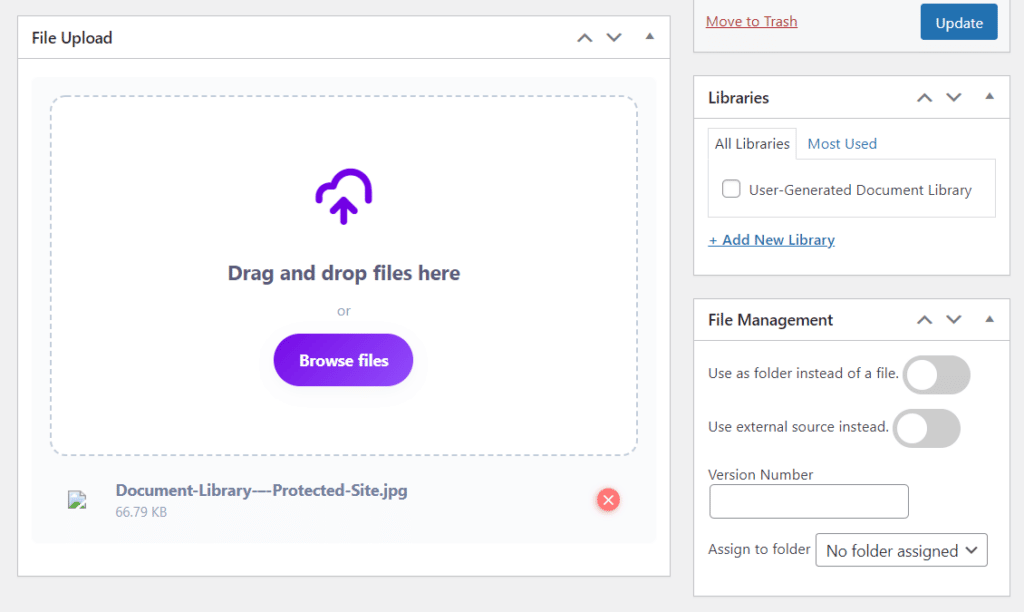
- Assign it to a library – Assign which library you want this file to appear in. If you’ve not created one yet, see our How to create a library with Filr doc.
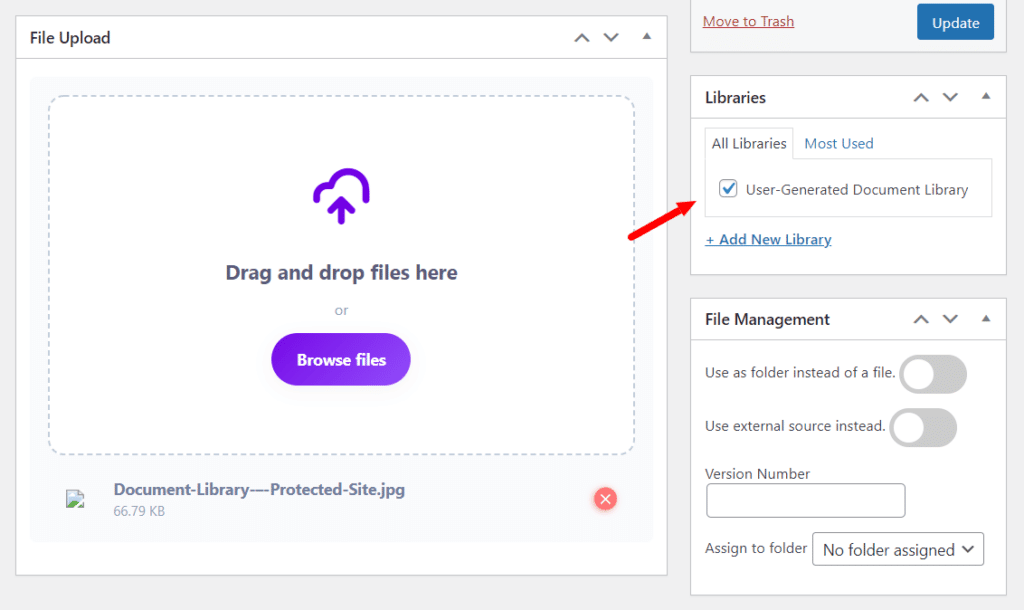
- File management – Below the Library section, you’ll find the file-management settings. Here you can convert a file to a folder, use an external file instead of the uploaded one, and assign a file to a folder and add a version number for the file. Make sure to save the file when converting it to a folder because the available options will change based on the selection.
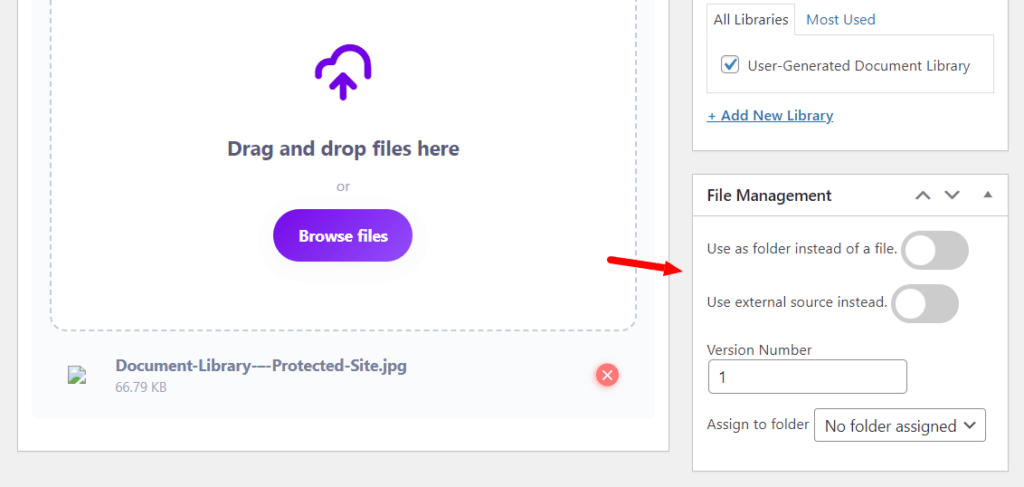
- Advanced Options – Directly below File management, you’ll find the advanced options.
- Expire by date – Set an expiration date for your uploaded files. The download link won’t be accessible after this date, and the files won’t be available in any list shortcodes.
- Expire by downloads– Same as expiration by date but with the number of downloads. Every time a user downloads the file with the download link or inside the shortcode, the number will be reduced. If the number of remaining downloads reaches 0, the file expired (link and within the shortcode).
- Password for ZIP – You can set a password to protect ZIP files. It protects the real file created on upload, but it requires a PHP extension called libzip.
- Encrypt filename – You can encrypt your file name with this option. This is especially useful if you upload multiple files at once. The dynamically created ZIP file is encrypted. But it also works fine for single files.
- User Restriction – This helps you restrict files to specific users or entire user roles. Both options can be used together. Administrators are excluded from the restriction, so make sure to use an appropriate account for testing it.
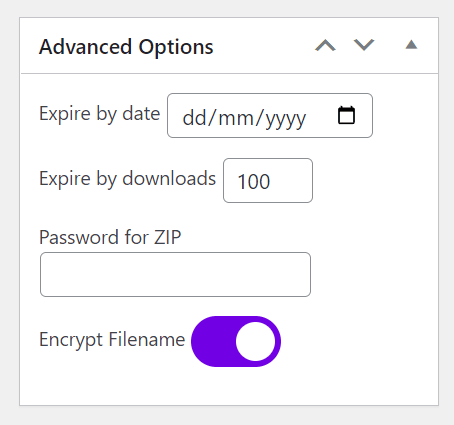
- Once you’re happy with your file, click Publish, and a download link will be created.